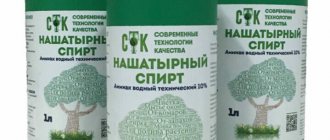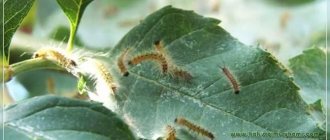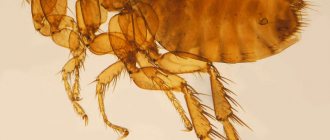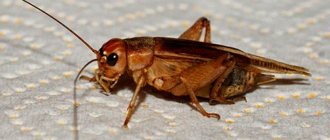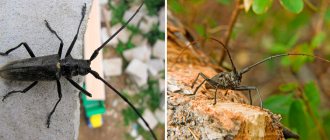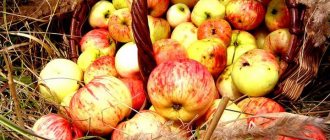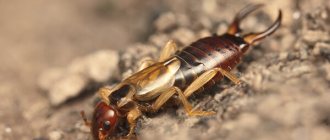What does black root look like and where does it grow?
Medicinal blackroot (Cynoglossum officinale) is a biennial herbaceous plant from the Borage family. Reaches a height of 1 m, has a dark dense tap root and several straight stems with branches in the upper part. The lanceolate leaves are heavily pubescent, especially below. The basal ones have long petioles, and the upper ones sit on the shoot.
Blackroot officinalis is also found under the names mousegon and ratheron.
In May and June, the plant bears small buds in paniculate inflorescences with funnel-shaped corollas of dirty red or bluish-red color. In August and September, the fruits of the medicinal blackroot ripen - egg-shaped nuts covered with thorns.
Important! The medicinal plant is classified as poisonous and has an unpleasant odor.
Where does blackroot grow in Russia?
The medicinal plant can be found throughout Russia. Blackroot is widespread in the European part and the Caucasus, Siberia and the regions of Central Asia. Selects for growth mainly river cliffs and roadsides, fields and dry slopes, wastelands and pebbles.
Growing blackroot
Indoor and outdoor types of blackroot are grown by seed. The material is harvested from annual or biennial plants. Ripe nuts - blackroot fruits - are filled with prickly seeds and can fall off on their own. Since Borage are characterized by a high degree of frost resistance, blackroot seeds are sown directly into the ground without any intermediate procedures. To carry out autumn sowing, ditches are dug with a depth of 2 to 3 cm. The crops are moistened as needed.
The emergence of seedlings is expected in early spring, when long basal leaves begin to rise above the soil. Transplantation of seedlings is done together with a ball of earth and to speed up the process, the growth stimulator “Kornevin” is used, which is added to the new planting hole.
Chemical composition
Photos of blackroot and a description of where it grows are of interest in folk medicine due to the chemical composition of the herb. Flowers, seeds, leaves and roots contain:
- tannins;
- bitterness and resin;
- essential oils;
- inulin;
- alkaloids and glycosides;
- fixed oils;
- consolidine and choline;
- fumaric acid;
- cyloglossin.
Uncontrolled use of biennials poses a great danger; you can be seriously poisoned by them. But in accordance with the recipes, using a medicinal plant is very useful.
Blackroot care
Caring for blackroot is quite simple. Unpretentiousness and resistance to drought are the main qualities of the plant. Conditions of prolonged sultry heat or, conversely, the onset of frost are considered harmless to the flower. However, it is important to plant blackroot bushes in illuminated, fertile areas of the garden, where there is a neutral or slightly alkaline environment. Otherwise, the substrate is diluted with lime. The area is first dug up, improving the drainage properties of the soil and breaking up large clods of earth.
Changes in ambient temperature or drafts will not cause much harm to the bushes. Grown stems need garter and support.
Drought is more easily tolerated by grass than stagnation of moisture in the root zone. Watering is carried out only occasionally. It is enough to moisten the roots once a week if there is no rain. During budding, the amount of irrigation water doubles, otherwise flowering will not be as abundant.
Fertilizing with “dog root” is done in the second year of life, when the soil is enriched with organic matter or mineral complexes in the spring or summer.
It is permissible not to carry out measures for pruning blackroot, since the bushes keep their shape and increase mass only in the upper part. We are talking about the appearance of new buds and the lengthening of flowering panicles.
Parasitic attacks and disease susceptibility rarely overtake the plant. Blackroot can be safely called that same natural “insecticide” that is used in the fight against slugs, moths, mosquitoes and other pests hiding in the garden.
Properties of black root
Traditional medicine uses medicinal black root in the treatment of numerous ailments. The plant improves the condition of the body, namely:
- promotes expectoration when coughing and speeds up recovery from colds;
- relieves inflammation;
- helps in the treatment of skin diseases - dermatitis and eczema;
- helps relieve muscle cramps;
- reduces pain from gout, arthritis and rheumatism;
- regulates digestion and accelerates metabolic processes;
- strengthens the body's immune resistance;
- improves the condition of bones and ligaments;
- has a beneficial effect on the skin and slows down the aging process;
- strengthens hair and nails;
- promotes healing of wounds, cuts and burns.
The properties of the medicinal plant are used for the prevention of oncology and in the complex treatment of cancer.
The fixative properties of medicinal black root are used for diarrhea
External use
For lotions and compresses, use infusions prepared in the following ways:
- Pour 4 tbsp. l. finely chopped roots with a liter of water, boil for 5 minutes, leave for 12 hours.
- Leaves or roots are doused with boiling water and wrapped in gauze. The compress for arthritis and rheumatism is ready.
Those who have treated various skin injuries on their bodies have noticed that dog tongue promotes rapid tissue healing. External use of medicinal black root does not pose a threat.
Methods of preparation and use
Traditional medicine offers several medicines based on useful plants. Some of them can only be used externally, others are suitable for internal use.
Tincture
An alcoholic tincture of a beneficial plant is beneficial for arthritis, rheumatism and gout. It is used for compresses and lotions, and added to medicinal baths.
The recipe for the remedy looks like this:
- 5 g of dried root is poured into a glass of good vodka;
- Boil the mixture under the lid over medium heat for 15 minutes;
- leave to infuse for another 12 hours;
- passed through a layer of gauze.
The plant tincture is used mainly externally.
You can use black root tincture to disinfect damage
Infusion
An aqueous infusion of medicinal black root is beneficial for coughs and colds, as well as a tendency to cramps. The remedy is prepared as follows:
- grind the dry root of the plant in a volume of 5 g;
- pour 1 liter of hot water into the raw material;
- keep covered for two hours;
- passed through folded gauze.
You can take the infusion three times a day, 5 ml. The product promotes expectoration, relieves fever and has a relaxing effect.
Treatment with black root infusion is continued for a week.
Decoction
A decoction of medicinal black root is prepared from the leaves of the plant and is most often used for joint pain, sprains and fractures. The healing remedy is done like this:
- grind dry leaves in the amount of five small spoons;
- pour 1 liter of liquid;
- heat in a water bath for half an hour;
- remove from the stove and filter.
The finished product is used for compresses and lotions. The decoction accelerates tissue restoration and has an analgesic effect. It should be used no longer than seven days.
We recommend reading: Tea with thyme: beneficial properties and contraindications
A decoction of medicinal black root can be added to relaxing baths.
Juice
For cold coughs and cramps, fresh black root juice has a good effect. The drug for home use is made as follows:
- crush the leaves and stems to a paste;
- the processed raw materials are squeezed through cheesecloth until pure juice is obtained;
- dilute the product with water in a ratio of 1:30.
You need to drink the juice three times a day, a small spoon on an empty stomach.
To avoid overdose, treatment with black root juice is carried out for no more than a week.
Ointment
For joint ailments, severe bruises and trophic ulcers, you can prepare an ointment from medicinal black root at home. The recipe looks like this:
- the dried root is crushed in the volume of a large spoon;
- mixed with an equal amount of comfrey;
- add 100 melted pork fat to the ingredients;
- mix thoroughly.
The finished ointment is rubbed into sore spots and lesions on the skin. If desired, the treated area can be covered with a compress.
Ointment with medicinal black root brings more benefits when heated
Bath
When treating fractures, as well as bruises, sprains and inflammation of the joints, you can take baths with the addition of black root decoction. The medicine is prepared as follows:
- mix 100 g of crushed roots and leaves of the plant;
- pour the collection with a large amount of hot water in a large basin or enamel bucket;
- bring to a boil and boil for 15 minutes over low heat;
- remove from the stove and leave for an hour.
The finished broth is filtered and added to the filled bath. For 10 liters of water, 200 g of medicinal raw materials are consumed. If the liquid is taken in a larger volume, then the amount of black root for the decoction is proportionally increased.
Take a bath with medicinal black root for about 15 minutes.
Medicinal properties
Medicinal black root has medicinal properties. Harvesting of roots occurs in the spring. The plant's grass is collected during the flowering period, and drying occurs at the same time.
The plant is very rich in various chemical elements:
- Alkaloids
- Coumarins (found in roots)
- Inulin, acid.
Since ancient times, black root has been used as a healing agent. The main roots of blackroot are the roots, which are dried and collected from spring until the period of development; the grass is usually collected during the flowering period.
A very versatile plant that can help with any problem. If you fall, it will be an excellent pain reliever. Stops bleeding. If a muscle cramp occurs, it will help even then.
In order for the plant to provide benefits, it must be prepared: pour fresh leaves with hot water, wait until it cools down and wrap it in a cloth bandage, applying it to the sore spot.
Traditional medicine discovered black root as a remedy for gastrointestinal bleeding. To do this, you need to make an infusion of dried roots. This infusion can help with cough.
This plant requires caution. When used internally, caution must be exercised. Infusion in a ratio of 1:20, take one teaspoon three times a day. If you use juice, take three drops four times a day.
Previously, we talked about the healing properties of Coltsfoot.
The use of black root for various hematomas and abrasions, as well as for the speedy fusion of bones, should be carried out using local anesthesia.
For ankera, angioma, atheroma, boils and other skin diseases, compresses are used. Also in cases of burns and insect bites, black root can also help.
Although the plant can cure many unpleasant diseases, it still remains poisonous. When using blackroot, you should carefully perform all manipulations with it. Be sure to wash your hands after using it.
Use in folk medicine
Medicinal black root can cause severe poisoning and requires careful handling. Despite this, traditional medicine offers quite a few options for using the plant for diseases.
To normalize bile secretion
For diseases of the liver and biliary tract, it is recommended to take an infusion of medicinal herbs. The recipe looks like this:
- a small spoon of medicinal blackroot leaves is poured with 250 ml of boiling water;
- cover the container with a lid;
- keep for an hour in a warm place and filter.
The finished infusion is taken four times a day, the dosage is only 1/2 a small spoon.
For oncology
The medicinal plant contains antioxidants and can slow down the development of cancer. In complex therapy, the following decoction is used:
- mix dry leaves of the plant and crushed rhizomes;
- pour 5 g of raw material with a glass of fresh boiling water;
- leave covered for 20 minutes;
- filter through cheesecloth.
You need to drink the decoction 15 drops three times a day.
Attention! For cancer, treatment with black root is carried out only in consultation with a doctor and in combination with official medications.
For convulsions
An alcohol tincture of medicinal black root has good anticonvulsant properties. It is prepared as follows:
- grind 10 g of dry raw materials;
- pour a glass of good vodka or alcohol diluted to 40 ° C;
- leave for two weeks in a dark place, periodically removing to shake;
- After the expiration date, strain.
The medicinal tincture is consumed 5 drops three times a day.
Before use, it is recommended to dilute the black root tincture with a small amount of water.
For rheumatism
For joint pain, a tincture of a beneficial plant in dry wine has a good effect. Traditional medicine offers the following recipe:
- 20 g of crushed dry raw materials are poured with 500 ml of red wine;
- put away in a closed container for five days to infuse;
- After the period has passed, the drug is passed through gauze.
You need to drink the product in small quantities, 15 drops up to four times a day. The tincture has good analgesic properties and relieves inflammation.
For diarrhea
Medicinal black root is beneficial for indigestion. For medicinal purposes, a water infusion is prepared:
- a small spoonful of roots and dry grass, as well as medicinal blackroot seeds, is poured into a glass of boiling water;
- Infuse the mixture, covered, until completely cooled;
- filter through cheesecloth to remove sediment.
The infusion should be consumed three times a day on an empty stomach, a single dosage is 30 drops. The drug has good fixing properties, but it is recommended to use it only when absolutely necessary.
For burns, bites and cuts
The medicinal root promotes rapid healing of the skin, has an anti-inflammatory effect and relieves pain and itching. To treat bites and wounds, make the following remedy:
- four large spoons of crushed root are brewed with 1 liter of hot water;
- Bring the mixture to a boil on the stove and simmer for another 15 minutes;
- keep covered for 12 hours and filter.
The product should be used for lotions and compresses. Black root prevents infections from developing and restores tissue integrity.
LiveInternetLiveInternet
Quote from Ipola
Read in full In your quotation book or community!
Blackroot officinalis - helminthic herb, cat soap, fever, dog tongue, dog root - a poisonous plant, which also has valuable medicinal properties. Its medicinal properties have been known since ancient times. Amirdovlat Amasiatsi wrote that if you hang its root on your neck when you have a headache, it will cure the headache, and if you prepare an ointment and lubricate dense ulcers, it will help and soften them. It blooms in May - June, the fruits ripen in August - September. It is famous for its unpleasant mouse smell, which disappears when it dries. All parts of the plant have medicinal properties, from the root to the flowers. The plant is completely pubescent, with hairs growing from almost invisible warts. The root is taproot, vertical, low-branched, up to 2.5 cm thick in diameter. Black root is widespread throughout Russia, in the Caucasus, Western and Eastern Siberia, and Central Asia. It grows on slopes, cliffs, pebbles, steppe meadows, as a weed in fallow lands, wastelands, railway embankments, along roads, near dwellings, sometimes on the edges of pine forests, along river banks. Many people came across this plant, picked it, but immediately threw it away because of the unpleasant smell, or simply passed by it. But every grass on earth grows for a reason. Each has some healing properties...
The plant has anti-inflammatory, analgesic, astringent, sedative, expectorant, epithelializing effects; When used externally, it exhibits antipruritic properties and promotes tissue regeneration.
The underground part of the plant, Blackroot officinalis, is officially used in homeopathy in many countries: Denmark, Spain, Norway, Portugal, France, Chile. Used in homeopathy. The grass is collected in May-July, the roots are collected in August-September
In folk medicine, decoction, infusion, tincture, Juice is a sedative for pain, cramps, cough, and diseases of the stomach and lungs; externally - for rheumatism, bone fractures, anal condyloma, wen, tumors, burns, boils, wounds, snake bites.
In folk medicine in Belarus, a decoction is used for bites by rabid animals, ointment (root, ground into powder, mixed with fat) for rheumatism, aching bones, and abscesses; tincture (vodka) - applied to wounds. In folk medicine, it is used for anal condyloma, wen, tumors, dysentery, uteroptosis (prolapse of the uterus), scrofula, it slows the outflow of bile from the gallbladder, but it is known that the plant inhibits motor activity, so it should be used only under the supervision of specialists.
An infusion is usually prepared from the aerial part - for dysentery, uteroptosis; externally - for scrofulosis.
The leaves are used externally for tumors and cuts.
In Ukraine, it is used for hemoptysis, goiter, tumors, and aches.
A decoction of the root and leaves (1:40) is taken 1/2 teaspoon 3 times a day.
Tincture (1:20) is taken 5 drops 3 times a day.
The juice is diluted with 25% alcohol and taken 5 drops 3 times a day.
In Russia, black root is used only in folk medicine. Medicines are made from both the aerial parts and the roots. The roots and seeds of the plant contain the alkaloids cynoglossin, cynoglossein, glucoalkaloid cansolidine, inulin, resins, bitterness, essential and fatty oils. Preparations from the root have been found to have a sedative and hypotensive effect and the ability to stimulate small intestinal peristalsis.
Tibetan medicine believes that black root has a wound-healing effect, dries out pus, treats diseases from ectoparasites, as well as tumors of the female genital area (in the form of douching). In folk medicine in many countries, black root was widely used for various diseases as an analgesic and anticonvulsant.
Infusion of black root medicinal.
Pour 1 teaspoon of dry leaves or roots with 1 glass of boiling water, leave until completely cooled, wrapped. Take 1 tablespoon after meals for diarrhea, cramps, to relieve pain and spasms.
Black root tincture.
Infused with vodka in proportions of 1:10. Medicinal raw materials – crushed dried leaves (herb) of black root. The tincture is used in the form of rubs, lotions and compresses as a pain reliever for arthritis, gout, and rheumatism.
Folk recipes.
• An infusion of the herb (or roots) in small quantities is prescribed for diarrhea, as a sedative for pain in the stomach and intestines, for coughing, and hemoptysis. Pour 1 teaspoon of herb (or roots) with 1 glass of boiling water, leave until cool. Take 1/2 teaspoon 3 times a day.
• Take 5 drops of fresh juice 3 times a day. A decoction of the roots in the form of local baths, washes, and lotions is used for bone fractures, as a means of dulling joint and bone pain and promoting rapid healing of bones.
• In the form of lotions for inflammatory processes of the skin, boils, burns, wounds, snake bites, rabid dogs. Pour 4 tablespoons of root into 1 liter of water, bring to a boil, boil for 15 minutes, leave in a sealed container for 12 hours, strain. The above decoction is used in the form of washes, lotions, compresses for anal condyloma, wen, and malignant tumors.
• For baths, washes, lotions: boil 4 tablespoons of black root roots for 15 minutes in 1 liter of water in a sealed container, leave for 12 hours, strain.
• For gout and rheumatic pain: boil black root leaves with boiling water, chop, wrap in gauze, and apply to the sore spot.
• A decoction of the roots in the form of local baths, washes, lotions is used for bone fractures as a means of dulling pain and promoting faster fusion of bones, as well as for burns, ulcers, wounds, and inflammatory processes of the skin. A decoction of the herb is used for baths and washes for scrofula, joint pain, wounds, and ulcers.
• Blackroot also has an insecticidal and raticidal effect - the ability to exterminate insects and rodents. Most often, this property is used by scattering parts of the plant around the house. The only danger is if there are children in the house - after all, they put everything in their mouths. So you have to be extremely careful.
Contraindications.
The plant has a curare-like effect. Black root helps treat paresis, but in case of overdose it causes paralysis of the central nervous system. In addition, remote poisoning by plant raw materials is possible. When the content in hay is more than 1%, cases of poisoning of sheep are known.
Be healthy!
Series of messages “Ode to herbs”:
Part 1 - Ode to the succession Part 2 - Ode to St. John's wort ... Part 30 - Water lily (white water lily) - medicinal properties and use in folk medicine Part 31 - Kalanchoe pinnate - a home doctor! Folk recipes with Kalanchoe. Part 32 - Black root - beneficial properties and use in folk medicine
Contraindications
The medicinal black root plant contains many toxic substances. It is recommended to use it externally, and for internal use, the dosage should be carefully observed.
It is necessary to completely abandon the use of the plant:
- during pregnancy;
- in the presence of individual allergies;
- during lactation;
- with exacerbation of gastrointestinal ailments;
- for serious chronic heart diseases;
- with liver failure.
Products based on medicinal black root should not be offered to children under 12 years of age. In adolescence, the use of herbal raw materials must be agreed with a doctor.
Collection and preparation of black root medicinal
Medicinal blackroot herb is harvested in late spring and early summer, during the flowering period. The healing underground part is dug out in mid-autumn, after the stems and leaves have completely withered. The collection is carried out in an ecologically clean area, away from roads, landfills and industrial facilities.
The prepared raw materials are laid out to dry in the shade in the fresh air or in a warm room with good ventilation. Direct rays of the sun should not fall on the medicinal herb. Since the plant is classified as poisonous, work with it using gloves, and then, just in case, wash your hands thoroughly.
Medicinal black root should be stored in dry glass jars or fabric bags. The raw materials are placed in a dark, cool place with low humidity. Periodically turn the workpieces so that mold does not grow in them.
Black root retains its valuable properties for a year
Important! Toxic medicinal raw materials must be stored in a place where children cannot reach them, and away from edible spices and seasonings.
Types and varieties of black root
There are about 100 species of plants. Many varieties are used in economic activities and folk medicine. Wild varieties of blackroot are rarely used as ornamental shrubs, so today breeders have released new plant varieties that decorate gardens and park areas. In addition, there are indoor varieties of black root.
Blackroot cynoglossum officinale
Tall representative of night blindness. The grass is erect and can exceed a meter in height. The plant has a pubescent stem, thanks to spreading shoots and large leaves. Cynoglossum has medicinal properties due to its rich chemical composition.
The shrub has several stems directed in different directions. Opposite leaves of an elongated shape appear on the shoots along the entire length. The leaves are large in size - the length of the leaf plate reaches 20 cm, and the width is up to 6 cm. The leaf plate has smooth, sharp edges and a pointed end. The central vein is located in the middle of the leaf. The surface of the sheet is covered with felt and a layer of fibers.
Medicinal blackroot blooms at the beginning of summer. Flowering is abundant, apical. The flowers are reddish in color, collected in small racem-like panicles. The diameter of each inflorescence does not exceed a centimeter. The flowers are covered with green funnels, so they are almost invisible in the foliage.
Medicinal black root is widely used in folk medicine and human economic activities. In addition, the properties of the plant help people fight rodents and pests on arable land.
Blackroot pleasant cynoglossum amabile
Hybrid representative of “night blindness”. Used for decorative purposes. It is a wide spreading shrub of annual growth. An abundant number of erect shoots extend from the base of the plant, the length of which does not exceed 50 cm. The stems and shoots are completely covered with foliage, so the shrub looks like a green ball.
The leaves are elongated, dark green. the surface of the sheet plate is covered with a small layer of felt and fibers. A visible central vein runs down the center of the leaf, giving the leaves a concave shape. The leaves on the plant are arranged opposite each other.
The decorative appearance of the cynoglossum is made by panicles of bright blue inflorescences that appear on the blackroot in early summer. As it grows, the panicles and number of flowers increase in size. Therefore, the peak of decorativeness occurs at the end of July. The diameter of the flowers on the bush is about 1.5 cm. After flowering, fruits with seeds form in place of the buds. However, as a rule, the fruits do not withstand winter. Therefore, to propagate this species, the seeds are collected in dry containers and stored in a warm room during the winter. Sowing of seeds is carried out in early spring.
Cretan blackroot cynoglossum creticum
A low annual representative of the shrub. The height of the crop does not exceed half a meter. The plant has a strong stem, from which several adventitious shoots extend in different directions. The central part of the bush is strong, fleshy, and helps keep the grass upright even in strong winds.
The leaves are oval-shaped and located over the entire surface of the bush. Most of the foliage is located at the apical part of the bush. The basal leaves are large, pointed, and fall off at the beginning of flowering. The leaf plate has smooth edges. On the shoots, the leaves are arranged opposite each other. The foliage is dark shades of green.
Unlike other members of the genus, the Cretan blackroot blooms only towards the end of summer. The inflorescences are arranged in a panicle like a spiral, so as they bloom, the spiral increases in size. The petals of the variety are white, gradually changing the color of the calyx to a blue or pink tint.
German blackroot cynoglossum germanicum
Tall shrubs, representing shoots of grayish or green shades. The culture is heavily covered with foliage. Thanks to the green foliage, the plant has almost invisible stems and shoots. The leaves are flat, light green in color. The leaf plate is smooth, completely covered with a network of veins. The length of the leaves is about 20 cm, and the width reaches 5 cm. The basal leaves fall off before the perennial blooms.
The plant blooms with lilac flowers, not exceeding a centimeter in diameter. The flowers are collected in paniculate inflorescences, increasing in size with the appearance of new flowers. Flowering occurs in mid-summer. After the flowers ripen and fall, nuts are formed on the bush - fruits with seeds.
The use of black root against mice
The properties of black root are used not only in folk medicine, but also in agriculture. A plant with toxic components in its composition and an unpleasant odor helps to cope with the invasion of rodents in the country. Black root is used in several ways:
- lay out the stems and underground parts of the plant in the basement, cellar or barn;
- shortly before the onset of winter, blackroot seeds are scattered on the floor in the house or in outbuildings;
- tie dry shoots of the plant to the trunks of fruit trees for the winter;
- pour seeds directly into mouse holes.
You can leave medicinal black root in open places in the house or outbuildings only if there are no pets or small children on the site.
To treat surfaces and areas for crops, you can use an infusion of the plant for spraying. They do it like this:
- measure out 100 g of dry rhizomes of the plant;
- pour 500 ml of boiling water over the raw materials;
- keep in a sealed container for two hours;
- when ready, strain.
The product must be poured into a container with a spray bottle and generously sprayed onto the surfaces in the shed or utility room, paying special attention to corners and crevices in the walls and floor.
Blackroot for pests
If black root grows in the garden, then the number of attacks from mice, rats and moles will be significantly reduced. This means that root crops and garden trees will not suffer significant damage. These animals cannot tolerate the pungent smell of the plant's sap. In its fresh form, it is unpleasant to humans, but the dried herb is not so fragrant for people.
Cynoglossum shoots and roots are laid out in basements, sheds and other rooms. A decoction of the plant can be added to whitewash for walls. In winter, bunches of dry grass are scattered near garden trees to protect their bark from rodents. To repel moles, seeds are poured into holes.
Animals try to avoid blackroot. If you have to be in direct contact with it, death occurs within a few minutes. The fumes of alkaloids have a nerve-paralytic effect.

